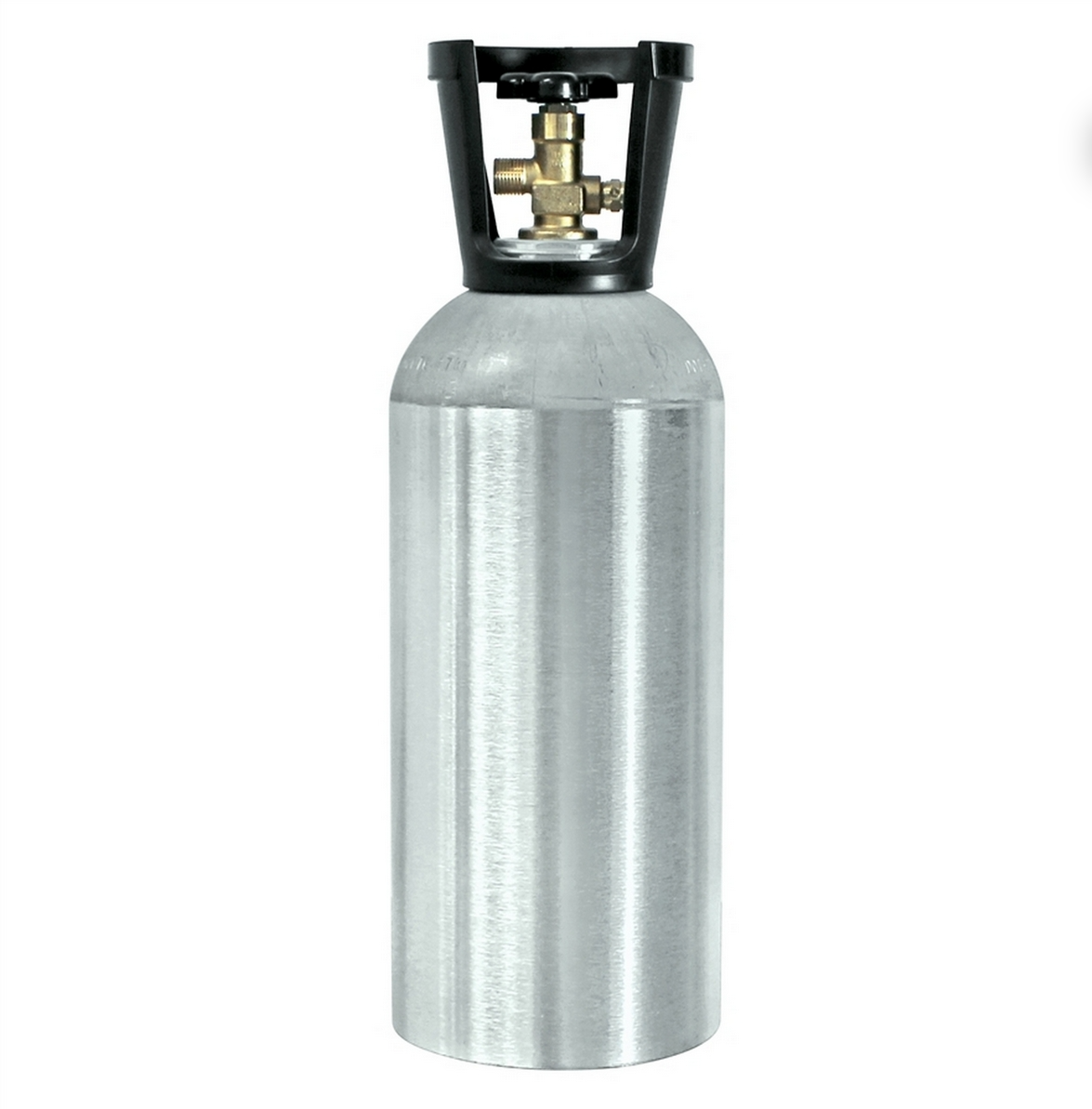DIY Sparkling Water
For years, sparkling water has been the refreshing cornerstone of our household’s beverage lineup. As avid meat-centric eaters following a Paleo-inspired diet, the simplicity of sparkling water—pure, unflavored, and endlessly refreshing—paired perfectly with our meals, especially steak. But when the cost of keeping up with our sparkling water habit began to pile up, I decided it was time to explore an alternative.
Enter my DIY carbonation system: a game-changer not just for cost-saving but also for achieving unparalleled levels of fizz.

Step-by-Step: Building the Perfect Carbonation System
The system I built combines practicality, creativity, and just the right dose of scientific understanding. Here’s how it all came together:
1. CO2 Source: The Heart of the Operation
- The Tank: I started with a 15-pound, beverage-grade CO2 tank. These tanks, commonly used in beer kegs, are durable, cost-effective, and widely available through beverage or brewing suppliers. Mine cost about $80 initially.
- Refilling: Refilling the tank at a fire extinguisher service shop costs about $35. Each refill powers over 2,000 liters of sparkling water, making it an incredibly economical choice.
2. Pressure Control: Regulating the Fizz
- The Regulator: A high-quality dual gauge pressure regulator allows precise control of CO2 flow into the water. I’ve found that setting the regulator to 50 PSI creates the perfect carbonation level—sharp and lively but not overbearing.
- The regulator connects to the CO2 tank and feeds gas through a food-grade hose to the bottle being carbonated.

3. Reusing Bottles: A Sustainable Solution
To carbonate, I reuse strong, durable water bottles (like those from sparkling water brands) fitted with custom carbonator caps. These caps create a tight seal, ensuring no gas escapes during the process.
4. Pre-Chilling the Water: The Key to Superior Carbonation
- The Science of Temperature: The colder the water, the better it absorbs CO2. Near-freezing temperatures significantly increase the solubility of CO2 because the water molecules are less active, allowing them to “trap” more gas.
- Near-Freezing Temperature: I chill the bottles in the freezer until they’re just shy of forming ice crystals. This ensures maximum CO2 absorption during carbonation.
Oscillation: The Game-Changer for Carbonation
In my quest for perfection, I realized shaking the bottle by hand was inefficient. To fully carbonate water, agitation is necessary during CO2 infusion to evenly disperse the gas.
The Search for Automation
After some research into lab equipment, I discovered oscillators—machines designed to gently yet consistently agitate samples in scientific experiments. These devices proved ideal for my needs.

Building the Oscillating Carbonation Setup
Here’s how I integrated an oscillator into my system:
- The Oscillator:
- I purchased a compact orbital shaker on AliExpress. It was affordable and arrived within a few weeks.
- The oscillator’s mechanism ensures continuous, gentle spinning, which disperses CO2 efficiently into the water.
- Custom Mounting:
- I mounted the oscillator onto a sturdy wooden base for stability. (plywood cut to size)
- To secure the bottle during oscillation, I added a steel water bottle holder (originally designed for bicycles) to the top of the wooden mount.
- Integrated System:
- During carbonation, I attach the bottle to the CO2 system, set the pressure to 50 PSI, and let the oscillator do the work.
- The result: perfectly carbonated water in just a few minutes—no manual shaking required.
The Science of Agitation and CO2 Absorption
Oscillation plays a critical role in achieving ultra-carbonation:
- Dispersing CO2 Molecules:
- When CO2 is injected into water, it initially forms bubbles on the surface or within the liquid. Agitation breaks these bubbles, allowing the gas to dissolve evenly into the water.
- Increased Absorption Rate:
- Agitation creates microcurrents in the water, promoting molecular interactions between CO2 and H2O. This maximizes carbonation while reducing processing time.
- Better Fizzy Results:
- The oscillator produces water with finer bubbles that last longer, delivering a crisp and refreshing experience.
Why This System is Superior
- Cost Efficiency: For just a few cents per liter, I now have unlimited sparkling water. The $35 CO2 refill cost spreads over 2,000 liters, making it far cheaper than store-bought options or SodaStream cartridges.
- Customization: By adjusting the PSI, I can control the carbonation level. I prefer ultra-carbonated water—the kind that stings a little—but the system can be tweaked for gentler fizz, too.
- Convenience: The oscillator eliminates manual effort, creating consistent, high-quality carbonated water every time.
- Sustainability: Reusing bottles and minimizing waste align with our eco-conscious lifestyle.
Looking Ahead: On-Demand Sparkling Water
While the current system works beautifully, I’m already planning the next evolution:
- Dual-Keg System:
- One keg will hold filtered water directly tied into the domestic water supply. (filtration system in between)
- The second keg, pressurized with CO2, will act as the carbonation chamber. Tied into the filter keg through a Carbonator Carbonation Ball Lock Lid. Providing continuous carbonation.
- Both kegs will be placed inside a fridge in our mechincal room to maintain chilled temperatures.
- Kitchen Tap Integration:
- Route the CO2 line to the kitchen tap behind the drywall from the mechanical room. Sparkling water will be available on demand via a beer tap installed in the kitchen. Just press the lever and pour.
- Streamlined Operation:
- With automated refills and constant pressure, this system will essentially run itself, combining high efficiency with luxury-level convenience.
What started as a simple quest to save money on sparkling water has turned into a perfect blend of science, creativity, and home engineering.
If you’re tired of the costs and limitations of store-bought sparkling water, I can’t recommend building your own setup enough. It’s affordable, sustainable, and rewarding.
Stay tuned as I unveil my on-demand kitchen tap system—it’s bound to make waves (and bubbles).
